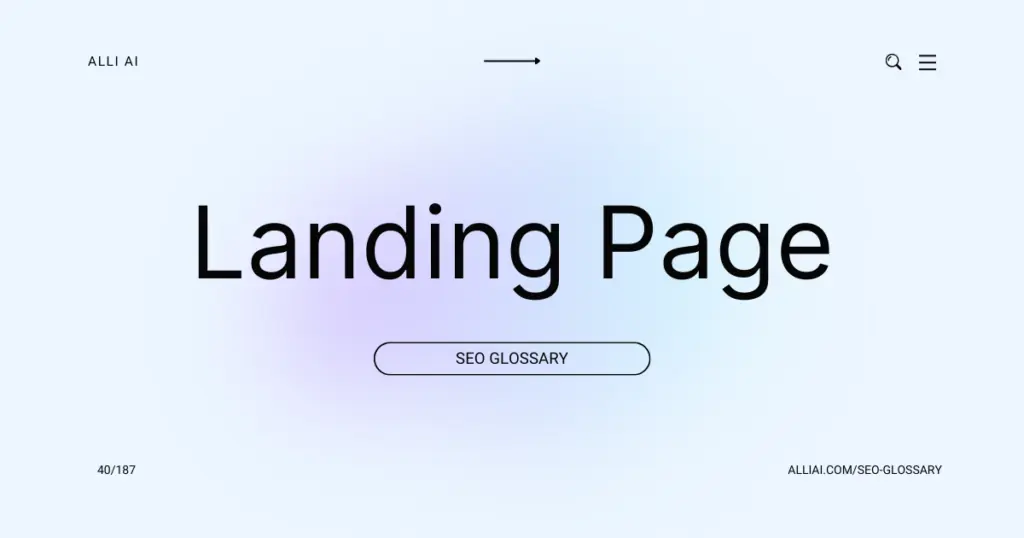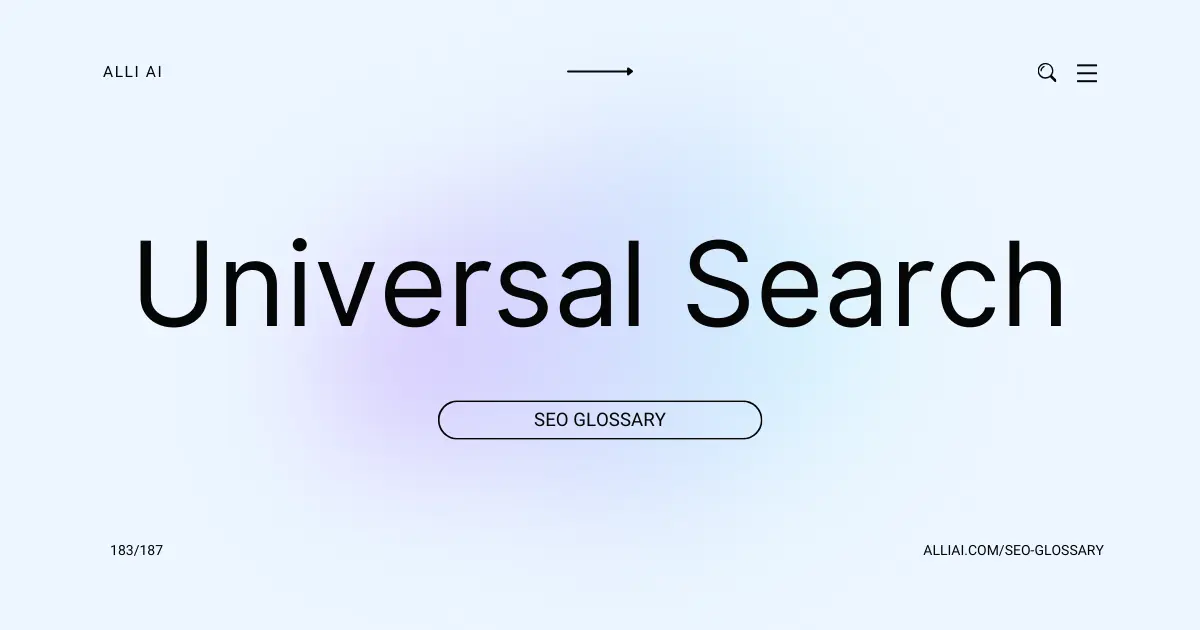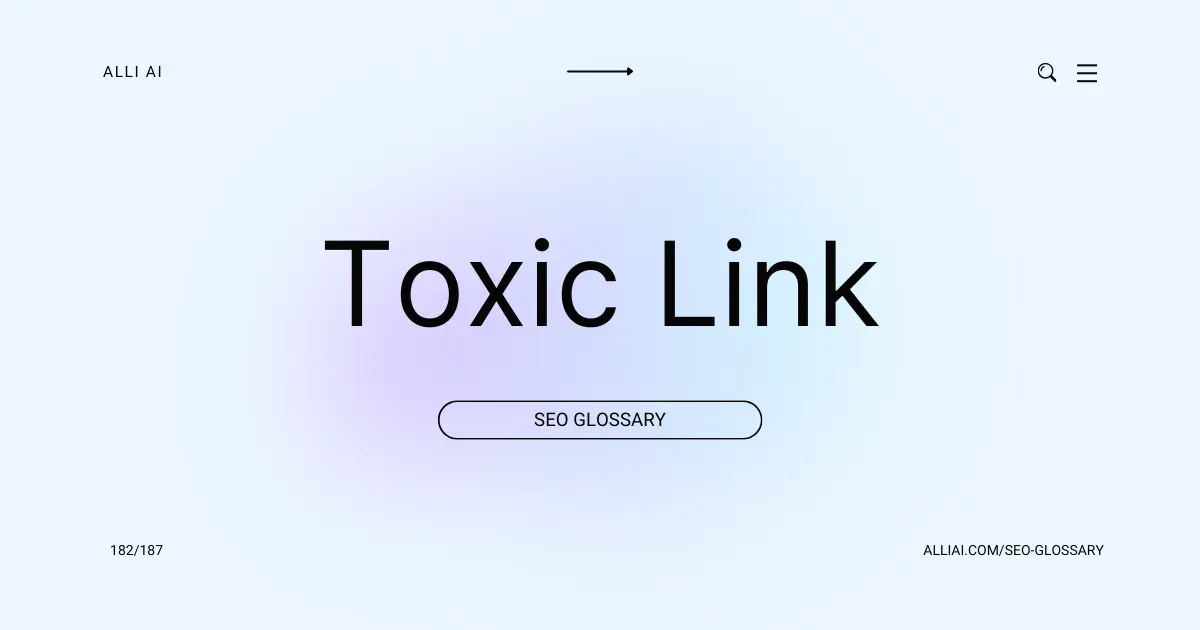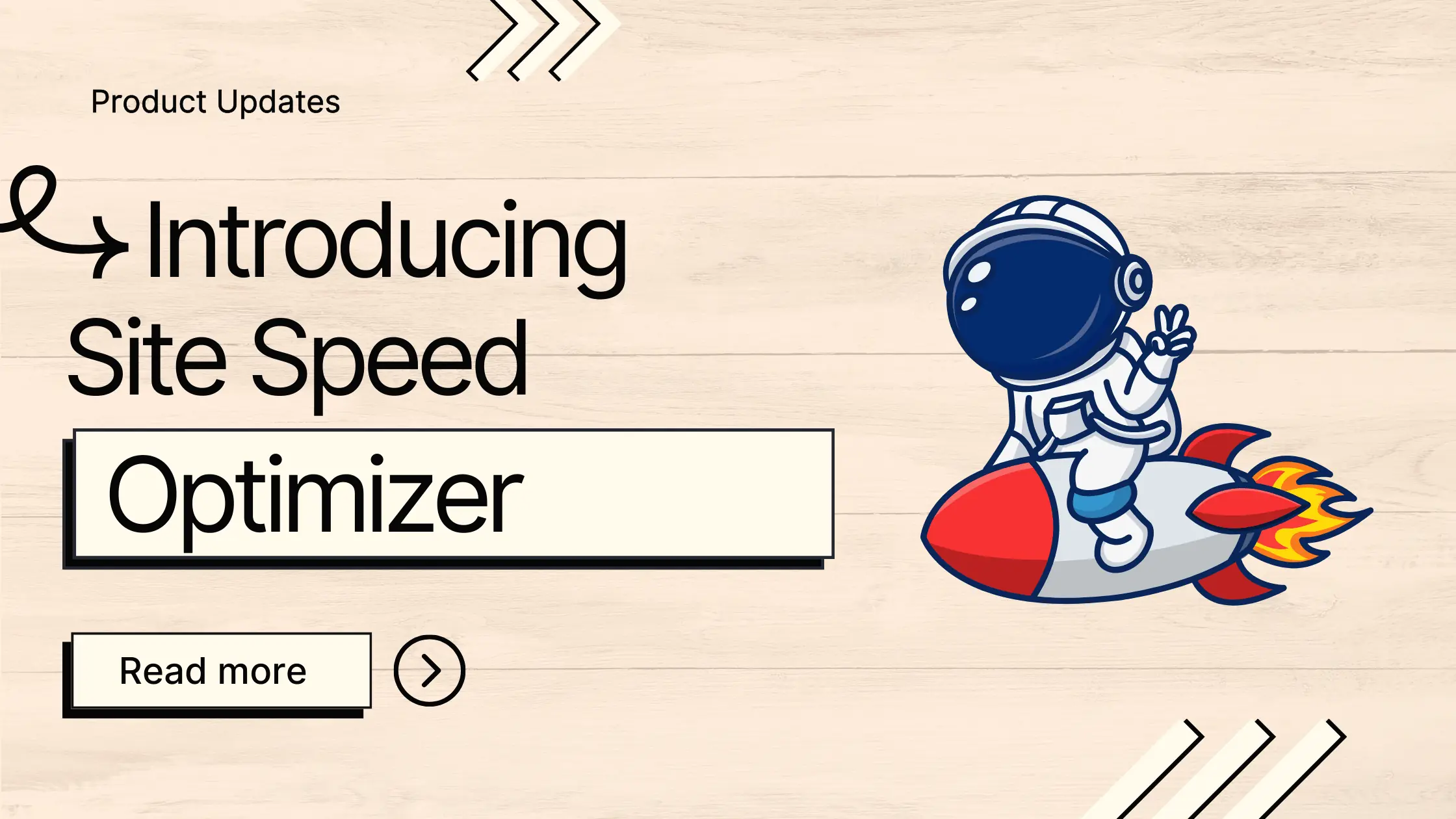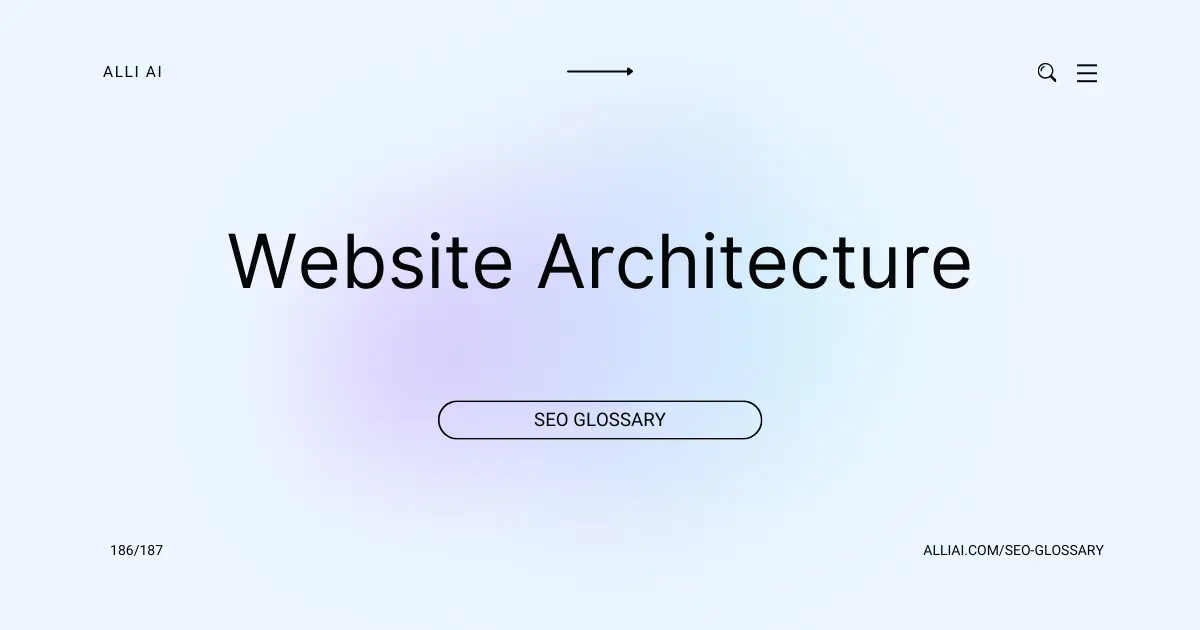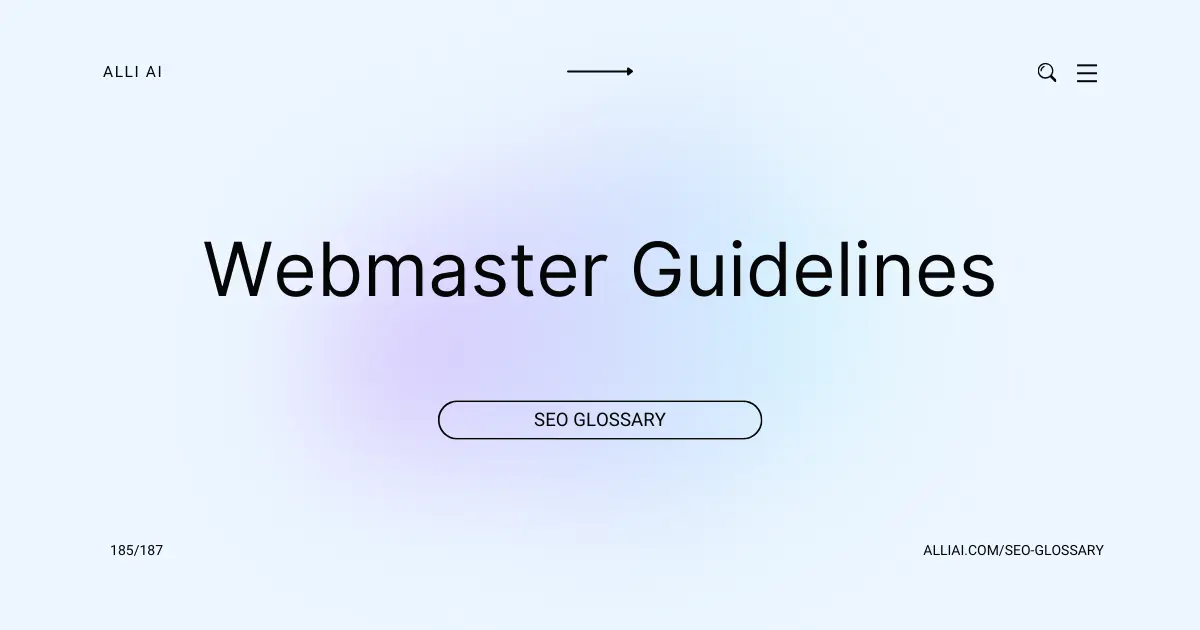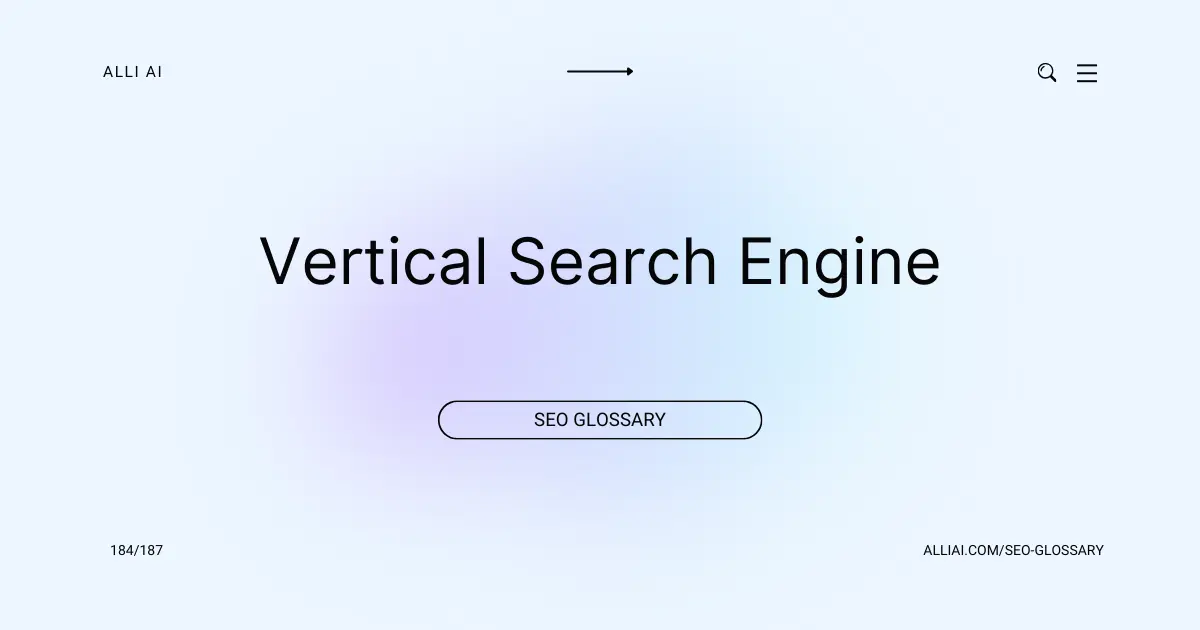What Does Landing Page Mean?
A landing page is a specific webpage that serves as the entry point for a website or a particular section of a website. It is designed primarily to receive and convert traffic from online marketing campaigns. The page focuses on a single objective, such as encouraging visitors to sign up for a newsletter, make a purchase, or fill out a form. Its main goal is to convert visitors into leads or customers.
Where Does Landing Page Fit Into The Broader SEO Landscape?
A landing page is a standalone web page specifically designed for a marketing or advertising campaign. It’s where a visitor “lands” after they click on a link in an email, or ads from Google, Bing, YouTube, Facebook, Instagram, Twitter, or similar places on the web. In the context of SEO, landing pages are optimized to rank well for specific keywords, ensuring that traffic directed from organic search results lands on a page that is highly relevant and tailored to the visitor’s search intent. This relevance helps improve the user experience by providing specific information or services desired by the user, which can lead to higher conversion rates.
SEO strategies for landing pages involve optimizing content and meta tags with target keywords, improving page load speeds, ensuring mobile-friendliness, and building high-quality backlinks to the page. These pages also contribute to a website’s broader SEO efforts by increasing the overall site engagement and quality scores, which are favorable in the eyes of search engines like Google. Furthermore, well-optimized landing pages can lead to increases in organic traffic, allowing businesses to benefit from both paid and organic strategies simultaneously.
Moreover, as they are focused on specific objectives, they can be used to target niche markets more effectively than general content, making them useful for capturing segments of traffic that might be missed by more broadly focused pages. This specificity can improve the overall SEO strategy by aligning more closely with user intent, thereby increasing the likelihood that users will engage with the content and convert.
Real Life Analogies or Metaphors to Explain Landing Page
A landing page is like a fishing net: designed specifically to capture fish (or in the case of a landing page, leads) by matching the exact size and shape needed to catch the type of fish you’re targeting.
A landing page is like a storefront window: its primary job is to entice people to enter based on a compelling display (or offer) that catches their eye as they pass by.
A landing page is like a concierge desk at a hotel: it welcomes visitors, answers their immediate questions, and guides them to their next destination (or action) in the most helpful and efficient manner possible.
How the Landing Page Functions or is Implemented?
1. Domain and Hosting Setup: Secure a domain name; purchase web hosting; ensure server stability and speed.
2. SSL Certificate Installation: Install an SSL certificate for secure connections (HTTPS).
3. Website Building Platform: Choose a CMS or website builder (like WordPress, Wix, or custom HTML) to create the page.
4. Design and Layout: Design the page with a clear visual hierarchy. Utilize user-friendly navigation, responsive design for mobile devices, and attractive graphical elements.
5. Content Creation: Develop concise, persuasive content including headlines, subheadings, and body text, focusing on SEO with relevant keywords.
6. Call to Action (CTA): Incorporate a strong CTA button or form to prompt user engagement and conversion.
7. SEO Optimization: Optimize title tags, meta descriptions, and content with target keywords; ensure URL structure is SEO-friendly.
8. Image and Media Optimization: Use optimized images and videos in terms of size and resolution; include alt text for images.
9. Loading Speed Optimization: Compress resources, leverage browser caching, and minify CSS, JavaScript, and HTML.
10. Analytics Tracking Setup: Integrate tools like Google Analytics to monitor traffic, behavior, and conversion metrics.
11. A/B Testing: Test variations of headlines, CTAs, images, and layouts to determine which performs best in terms of user engagement and conversion rates.
12. Landing Page Promotion: Utilize PPC advertising, social media marketing, or email campaigns to drive traffic to the page.
13. Compliance and Privacy: Include privacy policy, terms of service if necessary, and ensure compliance with regulations like GDPR for handling user data.
14. Regular Updates and Maintenance: Regularly update content, monitor page performance, and make adjustments based on analytics data.
15. Feedback Mechanism: Implement tools or forms to collect user feedback for continued optimization.
Impact Landing Page has on SEO
1. Relevance and Content Quality: A well-optimized landing page with high-quality, relevant content can significantly boost a website’s relevance for specific search queries. Search engines rank pages higher if the content effectively satisfies user intent.
2. Keyword Optimization: Landing pages allow for targeted keyword optimization. By focusing on specific high-value keywords, these pages can rank better in search engine results pages (SERPs), driving more targeted traffic.
3. User Engagement Metrics: High-quality landing pages improve user engagement metrics like time on site, bounce rate, and click-through rate. Positive engagement signals can influence SEO rankings positively as they suggest the page is valuable to visitors.
4. Page Speed: Landing pages designed with optimized images and minimalistic code can load faster, enhancing page speed. Since page speed is a ranking factor, faster pages are likely to achieve better search engine rankings.
5. Mobile Optimization: With increasing mobile usage, mobile-optimized landing pages are essential for SEO. Mobile-friendliness is a ranking factor, and pages that provide a good user experience on mobile devices tend to rank better in mobile search results.
6. Conversion Rate Optimization (CRO): SEO isn’t just about driving traffic—it’s about driving the right traffic that converts. Landing pages that are optimized for conversions contribute to business goals directly and can also indirectly benefit SEO through enhanced user signals.
7. Internal Linking: Effectively used internal links on landing pages can help spread link equity throughout the website and direct users to other relevant pages, enhancing overall site navigation and SEO.
8. Backlinks: High-quality landing pages are more likely to earn backlinks from other websites, which are crucial for SEO. Backlinks serve as endorsements from other sites, improving the site’s authority and ranking.
9. Social Signals: Shareable landing pages can generate more social signals (likes, shares, tweets, etc.). Though social signals are not a direct ranking factor, they increase visibility and traffic, which can indirectly impact SEO rankings.
10. Local SEO: For local businesses, landing pages can be optimized for local search by including local keywords, local business information, and integrating Google Maps. This helps in ranking higher in local search queries and attracting local traffic.
Each aspect of a landing page, from content to technical structure, plays a crucial role in enhancing a website’s overall SEO effectiveness and user experience.
SEO Best Practices For Landing Page
1. Keyword Research: Identify relevant, high-volume keywords that align with the content and goals of the landing page.
2. Title Tag Optimization: Include the primary keyword at the beginning of the title tag, ensuring it’s under 60 characters.
3. Meta Description: Craft a compelling meta description with the primary keyword. Keep it under 160 characters.
4. Header Tags: Use H1, H2, and H3 tags effectively. Place the main keyword in the H1 tag and secondary keywords in H2 and H3 tags.
5. Content Optimization: Ensure the content is informative, relevant, and uses the primary and secondary keywords naturally. Aim for a minimum of 300 words.
6. Image Optimization: Use relevant images and include alt text with the primary keyword for each image.
7. URL Structure: Ensure the URL is concise, uses a hyphen (-) between words, and includes the primary keyword.
8. Mobile Optimization: Ensure the landing page is responsive and loads quickly on mobile devices.
9. Loading Speed: Optimize images, minify CSS, JS, and HTML to improve page speed.
10. Internal Linking: Include links to other relevant pages on your website with appropriate anchor text.
11. External Links: Obtain high-quality backlinks from reputable sites within your niche.
12. Call to Action: Ensure a clear, compelling call to action (CTA) is visible and accessible.
13. Social Sharing Buttons: Include social sharing buttons to encourage users to share the page.
14. Schema Markup: Implement schema markup to help search engines understand the content of your page better.
15. SSL Certificate: Secure your site with HTTPS to protect user data and improve trust.
16. Analytics Tracking: Set up Google Analytics and Google Search Console to monitor traffic and optimize based on user data.
17. A/B Testing: Regularly test different elements of your page (like headlines, CTAs, images) to see which versions perform the best.
18. Feedback Collection: Implement tools to collect user feedback for ongoing optimization and improvements.
19. Regular Updates: Keep the content fresh and updated regularly to maintain rankings and user interest.
20. Compliance Checks: Ensure the landing page complies with GDPR and other relevant regulations.
Common Mistakes To Avoid
1. Ignoring Page Load Speed:
– Optimize image sizes.
– Minimize HTTP requests.
– Use asynchronous loading for CSS and JavaScript.
2. Poor Mobile Optimization:
– Implement responsive design.
– Test on various devices and screen sizes.
– Utilize mobile-friendly navigation.
3. Overusing Pop-ups and Intrusive Interstitials:
– Limit use of pop-ups.
– Ensure pop-ups do not cover main content.
– Use legally required pop-ups (e.g., for cookies) wisely.
4. Complex Navigation:
– Simplify menu items.
– Use clear, descriptive labels.
– Ensure the primary call-to-action is prominent.
5. Lacking Clear Call-to-Action (CTA):
– Use action-oriented text.
– Make the CTA button color stand out.
– Place CTA above the fold and in other strategic spots.
6. Using Too Much Text:
– Break text with headers, bullets, and images.
– Keep paragraphs short.
– Highlight key points (bold or italics).
7. Ignoring SEO Basics:
– Optimize title tags and meta descriptions.
– Use keyword-rich headers and content.
– Ensure URLs are descriptive and concise.
8. Not Testing Different Versions (A/B Testing):
– Routinely test different versions of landing pages.
– Use tools to segment traffic and directly compare performance metrics.
– Implement changes based on test results.
9. Failing to Measure Performance:
– Set up proper tracking with tools like Google Analytics.
– Monitor key performance indicators (KPIs) such as bounce rate, conversion rate, and time on page.
– Adjust strategies based on analytics insights.
10. Neglecting Legal Compliance:
– Include privacy policy links if collecting data.
– Ensure compliance with GDPR, CCPA, and other regulations.
– Use cookies consent banners when required.
